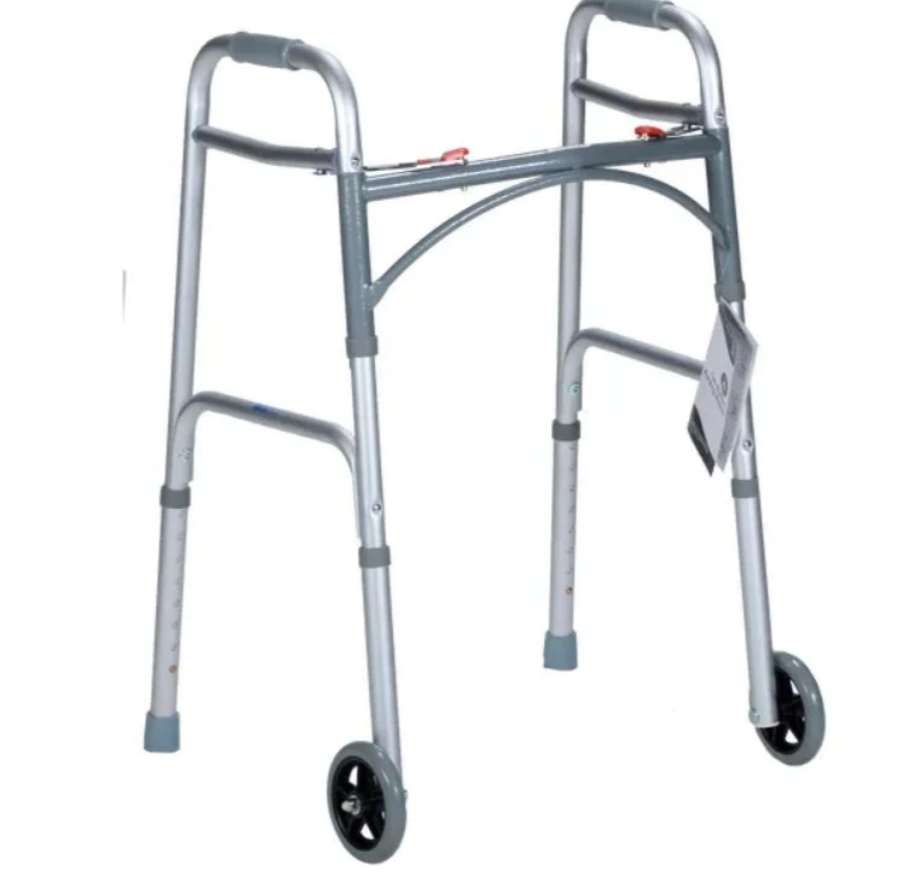Exploring the World of Walkers
Walking is a fundamental human activity that we often take for granted, but for some individuals, mobility challenges can make it difficult to move freely and confidently. Fortunately, various types of walkers have been designed to provide support, stability, and independence to those who need them. In this blog post, we'll explore the different types of walkers available today and how they cater to diverse mobility needs.
Front-Wheeled Walker
The front-wheeled walker is an evolution of the standard walker. It retains the four legs but has two wheels on the front legs, making it easier to maneuver. This type of walker is suitable for individuals who have moderate balance issues but still need substantial support. The front wheels provide smoother movement and reduce the need to lift the walker with every step, improving overall mobility. Its design allows for a wider base, ensuring maximum stability. This walker is traditionally not recommended for individuals with Movement Disorders or those with limited upper body strength or dexterity. This walker does require the user to lift the walker in order to turn, which can increase the risk of falls.
Rollator Walker or Four-Wheeled Walker
The rollator walker features four wheels and typically includes a seat, hand brakes, and a storage pouch. Users can walk at a faster pace and rest whenever needed. Rollators are beneficial for outdoor use or in situations where individuals need a convenient place to sit. One needs to take caution when using this walker as it can roll away from you. Making sure that your feet are always by the back wheels is a good cue to help you keep the walker close, decrease forward flexed posture, and reduce the risk of fall.
Upright Walker
The upright walker is designed to promote better posture and reduce strain on the shoulders and back. It features a unique open-frame design that surrounds the user and provides support from both sides. Upright walkers often have height-adjustable handles and convenient accessories like trays and cup holders. This type of walker is suitable for individuals with limited hand dexterity and encourages a more natural walking pattern.
U-Step Walker
This walker is designed with those with neurological conditions in mind. The majority of the weight of the U-Step is in the base, which provides you with a low center of gravity for greater stability. While the walker is stable, weight can be added to the walker to increase stability. Unlike traditional walkers, the braking system is opposite, meaning the walker will not roll until you lightly squeeze either hand brake. Once you release the hand brake, the unit will stop immediately. This feature is particularly helpful when standing up from a chair and decreases the tendency for the walker to roll away from you. Many people find that wheeled walkers roll too fast for them. The Ustep has adjustments where you can increase the rolling resistance for better control. In addition, there is an optional feature primarily used by those with Parkinson’s, but can be used by anyone with an irregular gait pattern. The walker comes with an auditory and visual cues to help get you started, normalize your walking, and increase your stride.
Conclusion
In conclusion, the world of walkers offers a wide range of options to cater to diverse mobility needs. Each type of walker comes with unique features and benefits, empowering individuals with the support they require to move confidently and independently. Whether it's a standard walker for maximum stability or a rollator for an active lifestyle, these walking aids have significantly improved the quality of life for many people.
If you or someone you know is facing mobility challenges, it's beneficial to consult with a healthcare professional or physical therapist to determine the most suitable type of walker. Proper fitting and training are crucial to ensure safety and comfort while using these walking aids. Remember, with the right walker, you can embrace life, decrease fall risk, conserve energy, and continue to explore the world around you!




